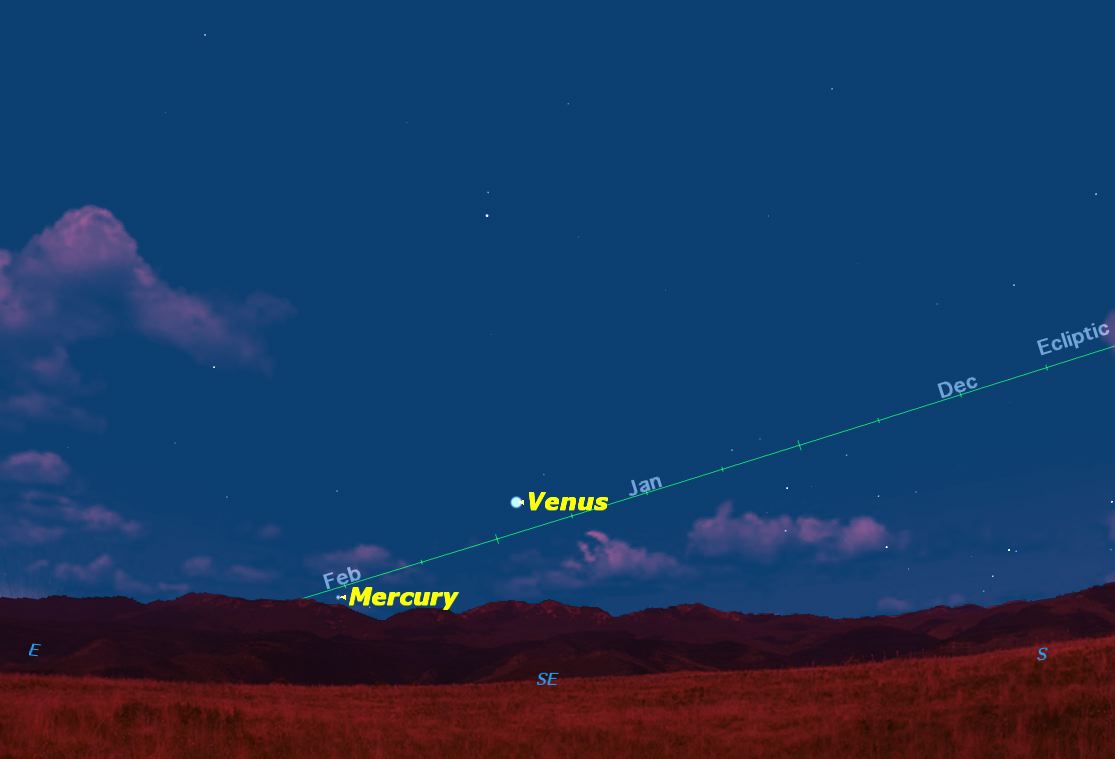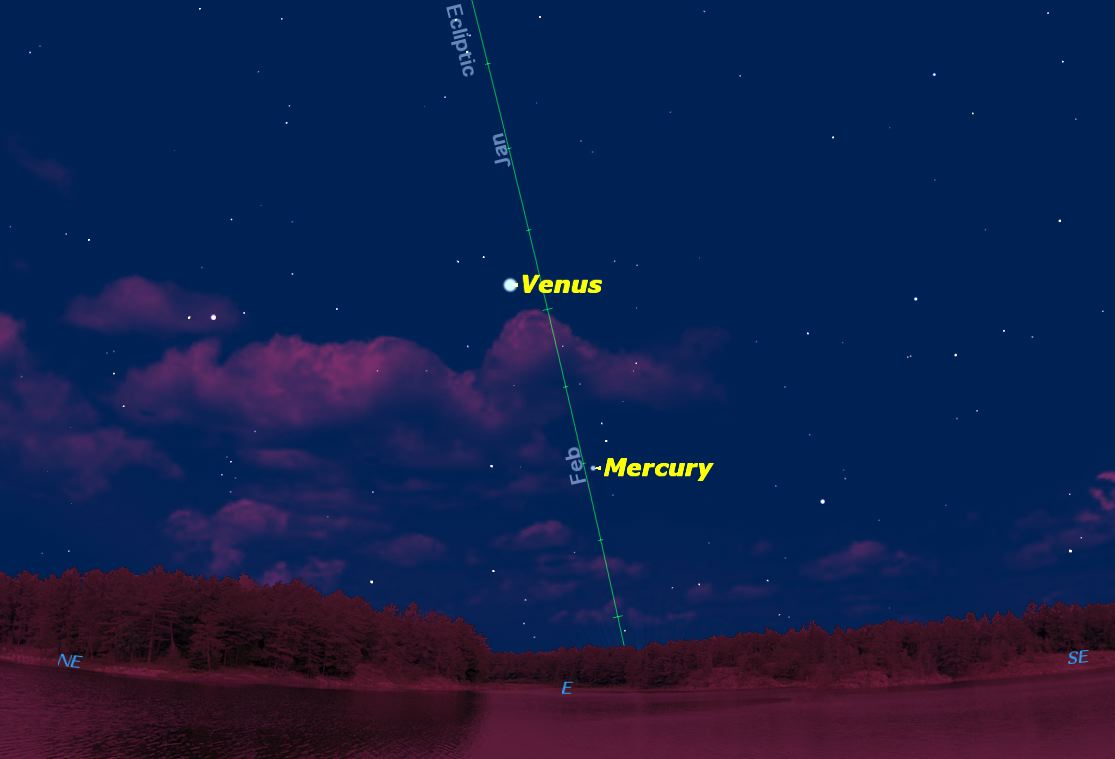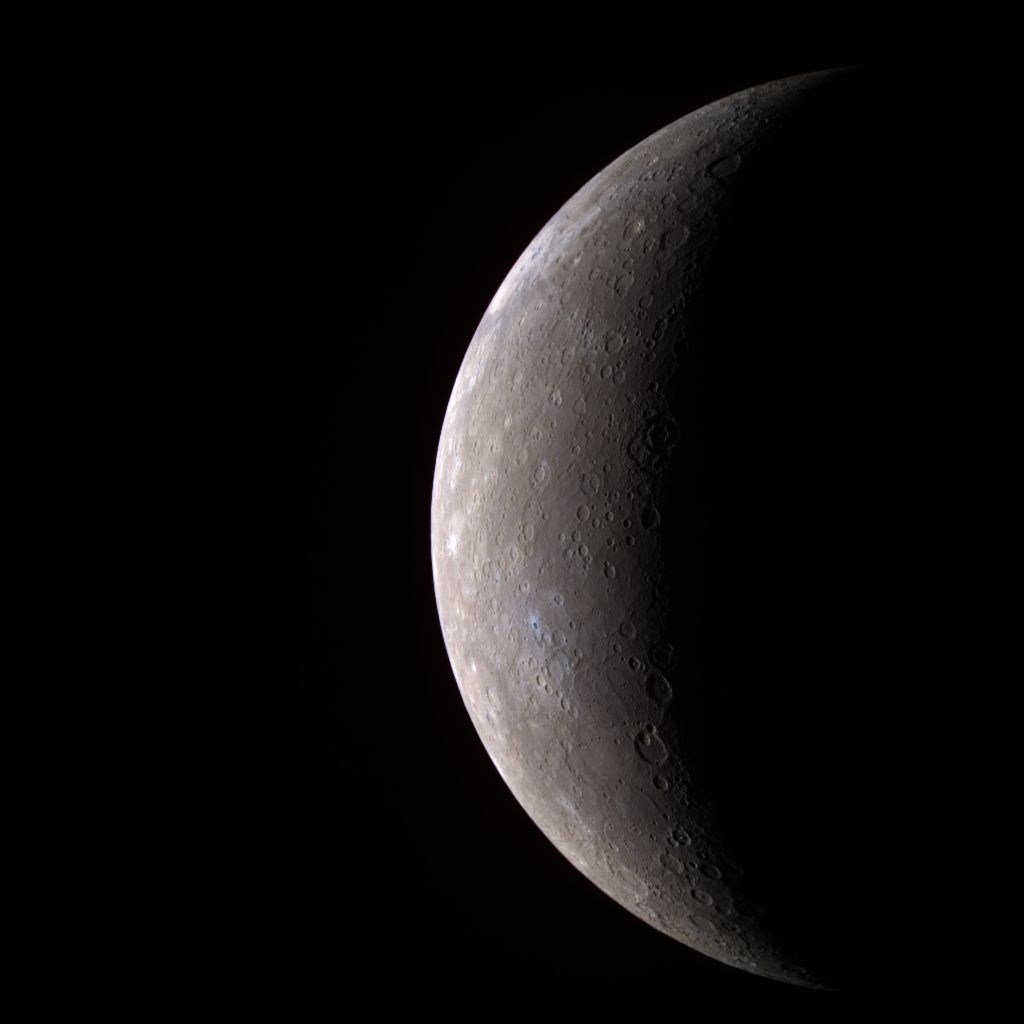Elusive Mercury Visible in March's Dawn Sky: How to See It

The next few weeks offer an excellent opportunity to see the hard-to-spot planet Mercury.
Because Mercury orbits so close to the sun, it never strays far from the sun in our sky. The best opportunities come when Mercury reaches "greatest elongation" from the sun, which happens next on Friday, March 14.
Mercury alternates between being a "morning star" and an "evening star" through the year as it peeks out on one side of the sun or the other. In a typical year, there are three each of its morning and evening appearances. For the next few weeks, Mercury will be rising just before the sun in the morning. [Mercury Quiz: Simple Facts, Tough Challenge]

All apparitions of Mercury are not created equally. The ecliptic, the path of the sun and planets across the sky, is sometimes almost perpendicular to the horizon, giving lots of room for Mercury to clear the horizon. At other times, the ecliptic is at a very shallow angle, making Mercury hard to spot.
Mercury’s visibility also depends on where you're observing from. The upcoming apparition favors observers in the Southern Hemisphere, while making a much greater challenge for northerners.
An observer at a mid-northern latitude in North America about half an hour before sunrise on the morning of March 14 will see Venus in the southeast with Mercury low and well to the left of it. (The ecliptic will be at an extremely oblique angle to the horizon.)
Compare this with the view from Cape Town, South Africa, where Mercury and Venus will be due east, and well above the horizon (and the ecliptic will be almost straight up from the horizon).
Get the Space.com Newsletter
Breaking space news, the latest updates on rocket launches, skywatching events and more!

Mercury is a planet best appreciated with binoculars or the naked eye. Through a telescope, it presents an extremely tiny "half moon." Because of its low altitude, it is severely affected by the Earth's atmospheric effects. It appears to boil and bubble, and is often smeared with color because of the prism effect of our atmosphere.
An interesting trick used by observers to improve the view of Mercury is only possible during a morning apparition like this one. Locate Mercury at the optimum time, about half an hour before sunrise, and then continue to follow it in your telescope as it rises in the sky with the sun. Once it gets at least 15 degrees above the horizon, the atmospheric effects diminish, and you'll be treated to a steady view of Mercury's tiny disk. In a telescope you can see that it goes through phases just like Venus and the Moon.
Observers with computerized telescopes or mounts with accurate setting circles can observe Mercury when it's high in the sky during daylight hours. But be very careful to keep your telescope pointed well away from the sun. It's hard to predict exactly what path a computerized telescope may follow to reach Mercury, so keep well away from the eyepiece while it is slewing.
Editor's note: If you have an amazing night sky photo you'd like to share for a possible story or image gallery, please contact managing editor Tariq Malik at spacephotos@space.com.
This article was provided to SPACE.com by Simulation Curriculum, the leader in space science curriculum solutions and the makers of Starry Night and SkySafari. Follow Starry Night on Twitter @StarryNightEdu. Follow us @Spacedotcom, Facebook and Google+. Original article on Space.com.
Join our Space Forums to keep talking space on the latest missions, night sky and more! And if you have a news tip, correction or comment, let us know at: community@space.com.

Geoff Gaherty was Space.com's Night Sky columnist and in partnership with Starry Night software and a dedicated amateur astronomer who sought to share the wonders of the night sky with the world. Based in Canada, Geoff studied mathematics and physics at McGill University and earned a Ph.D. in anthropology from the University of Toronto, all while pursuing a passion for the night sky and serving as an astronomy communicator. He credited a partial solar eclipse observed in 1946 (at age 5) and his 1957 sighting of the Comet Arend-Roland as a teenager for sparking his interest in amateur astronomy. In 2008, Geoff won the Chant Medal from the Royal Astronomical Society of Canada, an award given to a Canadian amateur astronomer in recognition of their lifetime achievements. Sadly, Geoff passed away July 7, 2016 due to complications from a kidney transplant, but his legacy continues at Starry Night.










